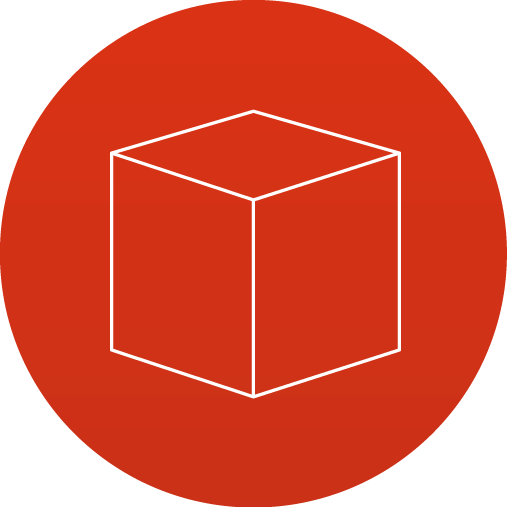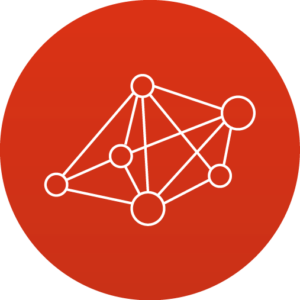The modern datacentre needs to meet the demands of an ever changing set of multiple and diverse workloads, each with differing characteristics for storage, network and server requirements. While at the same time meeting performance and availability goals, in an ever increasingly cost efficient way.

WHAT IS A DATACENTRE
Just in time hardware provisioning – Deploy resources and equipment in-line with system growth and demand, removing the requirement to install large amounts of potentially under utilised and depreciating equipment.
The ultimate goal of this design approach is to provide the best possible and most efficient solution for the delivery of the top application layer of capabilities and end user benefits.
While there are great advantages in using all of the sections together as part of an integrated solution, to aid in a staged system migration, it is possible to deploy the components in isolation as they each provide excellent integration with the existing technologies and products that may already be deployed within your system.
With Acuutech’s team’s deep understanding of the Microsoft software stack, we have the knowledge and expertise to deliver these solutions into your IT platform.
SOFTWARE DEFINED STORAGE
Microsoft Scale Out File Server (SoFS) is a software defined storage platform that uses industry standard hardware to replace the traditional SAN or local server RAID solutions – to deliver a highly available, high-performance data delivery platform for your virtualised workloads.
SoFS is built using industry standard servers and low cost storage enclosures (JBOD’s), to deliver scalable and reliable storage, coupled with quality of service and fault resilience. They easily integrate into your existing IT solutions to either replace or work in partnership with existing storage or SAN solutions.
Acuutech’s team are considered global leaders in SoFS design and technology, having designed and instigated multiple highly complex deployments around the world and have the experience and automation to tune and configure SoFS’s in very complex system topologies.
SoFS comes in two common deployment types:
SHARED SAS
Introduced in Windows Sever 2012, Shared SAS uses a shared access model (all nodes have access to all disks), commonly in two, three and four node configurations.
It provides very high performance and data integrity at a fraction of the cost of similar SAN solutions. Vendor endorsed solutions are available from multiple hardware providers, making it likely that a solution is available from your existing hardware provider.
STORAGE SPACE DIRECT (NON-SHARED)
Introduced in Windows Server 2016, Storage Spaces Direct (S2D) is a new generation of SoFS solution that uses a non-shared disk (each node only has access to its local disks and data integrity is maintained via a high-speed network interconnection).
S2D based solutions provide the same services and capabilities as Shared SAS SoFS’s, with the additional benefit of even greater cost reduction (for a given storage/ data quantity) and storage scale, with support for a far greater number of storage nodes.
When used in conjunction with other technologies within Windows Server 2016, S2D provides the ideal platform to deliver multi-site and stretch cluster / storage solutions, providing highly-available, distributed storage at a fraction of the cost of other solutions.
VIRTUAL NETWORKING AND ISOLATION SOFTWARE DEFINED NETWORKING
Virtual (or software defined) networking is a relatively recent concept and replaces the functions historically performed by dedicated networking equipment and segmentation protocols like vLAN’s.
Virtual networking should not be confused with virtual private networking or similar point to point connection solutions.
Within Windows Server there are two main parts of the virtual software defined networking, network isolation and network services.
Network isolation allows you to deploy network topologies on top of your core datacentre platform that are completely isolated from the underlying platform and if required, each other. The networks may use any subnet, even overlapping subnets and provide a clear and secure separation between underlying platform networking and the services / applications layer.
SOFTWARE DEFINED NETWORKING
Software defined networking routinely creates confusion; depending on who you are talking to and their existing viewpoint. It splits into two parts:
Fabric and data transport
Everything related to “traditional” networking related activities, but delivered via software instead of dedicated hardware.
Network virtualisation and isolation
The new concept of virtualised networking services and network isolation.
Both play a key role in a modern datacentre, however their usage and implementation are different.
VIRTUALISED NETWORK SERVICES
Network virtualised services is the second part of the solution and Microsoft Windows allows you to deploy a vast array of common network functions and capabilities via software, these include:
Firewalling
Load-balancing
Routing and site to site connections
All of these capabilities work as part of the virtualised networking solution so that they can provide capabilities to all of your virtual networks, without requiring a dedicated instance to be deployed for each one.
In short, through the use of virtualised network services, you can remove the requirement for dedicated and potentially costly hardware appliances, while at the same time delivering core network functions in a way that is highly-available and easy to modify as your requirements evolve.
BEYOND VIRTUALISATION
Software defined computing today goes far beyond simply the deployment of virtualised or containered applications, with all of the complex capabilities traditionally associated with resource management and application performance moved into the software layer:
- Virtual machine network services – As with the underlying fabric, all networking functions for a virtualised application may now be defined in software – quality of services, fault-tolerance, direct data mapping (SRIOV and RDMA) and high-traffic throughput (vRSS) are all defined and maintained within software.
- Backup and business continuity – Data backup and failover / replication can happen outside of the virtual machine and in a way that is transparent to the application. This greatly simplifies the challenges historically related to providing such capabilities within your system.
- High-availability – As all applications and services are virtualised, you can easily move them around your system without any effect on the underlying application (it can even be done live, without taking them down). Eradicate the traditional challenges of maintenance windows through dynamically moving workloads around your Hyper-V hosts.
Through the broad capabilities of software defined compute a powerful and reliable virtualisation platform can be deployed on any industry standard hardware to deliver applications and services to end users. Combined with full management, performance optimisation and control. All from a unified, single provider vendor.


